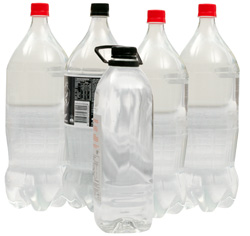Are you preparing for the Apocalypse? Do you want to drink more natural rain water? Are you going on a long trip? Whatever the reason may be that you need to store your water, you should be aware of all of the different ways you can safely store that precious H2O. The market produces water tanks made from a wide variety of materials that carry with them a wide variety of purposes when it comes to water storage. Here is a quick overview of a few types and uses concerning water tanks.
Polyethylene Tanks
There are many positive aspects to polyethylene tanks. One of those many aspects is that they are extremely durable. You could practically ram your car into a polyethylene tank, and there would be minimal damage to the structure. Also, they are safe to handle with no sharp edges, no exposed metal staples, and no pesky slivers of wood to get under your skin. It is also a fully recyclable substance, so you are reducing your carbon footprint on the planet.
When it comes to weather and the elements polyethylene holds strong. It is rot resistant, ultraviolet ray resistant, and pest resistant. There is no chemical reaction to worry about either, so you can store almost anything in tanks made from this material. You can use it to store your drinking water for months or even years without any contamination.
Stainless Steel Tanks
Stainless steel tanks are a different monster when it comes to storing drinking water. The elements definitely come into play when considering using this type of material for water storage. If you don’t heat it up or ingest any shavings of the material you’re in the clear. It seems a bit dumb, but indoor storage wouldn’t be too bad of idea. As long as no damage is done to the tank, it should last for an indefinite amount of time, but is quite a bit more expensive and heavy than its rival poly tank.
Concrete Tanks
Concrete tanks are good for clean and sanitary water storage. Concrete is good because of how it provides a stable internal temperature. This will result in less warm spots in your water and lower the risk of algae production. The water is also said to taste better when stored in this type of tank. It is thought that the minerals leaching from the concrete may be the source of the enriched flavor of the water.
When it comes to the environment, concrete probably isn’t the best choice. The source of the sand that is used in making the material sometimes falls into an environmentally sensitive area, and is not the best for the land. On the other hand, a well-built tank should last indefinitely.







Recent Comments